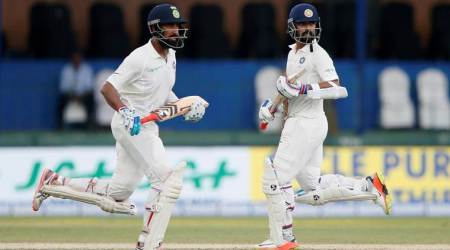 Authority flew naturally from Shanta, dressed flawlessly in handspun with her signature chunky silver jewellery. (Image source: Co-create Now/YouTube screenshot)
Authority flew naturally from Shanta, dressed flawlessly in handspun with her signature chunky silver jewellery. (Image source: Co-create Now/YouTube screenshot)
The career of Shanta Sarabjit Singh, dancer, dance critic, arts writer and organiser of many arts festivals, who passed away on August 2, spans a period when the arts and aesthetes were not a reviled but treasured species both in the media and civil society. Married to the eminent painter and mountaineer, Sarabjit Singh, who immortalised the Himalayas in his paintings, Shanta lived surrounded by art and artists. She lived the fears and hopes of our educated middle classes that survived the Partition and lived to see a new India take shape before their eyes.
What should endure, she asked rhetorically, in a lecture to a young audience. The profile of our nation is changing so fast, with the huge swell in the youth population. Many of them are highly creative, but confused. She recounted how she had asked her octogenarian dance guru, in a changing world in the midst of a fast paced life, how does one control one’s restless mind? Where is God? “Where is God?” the guru had retorted. “I have not seen him, nor have you. I only know this body and that there is a space within this in my heart where I must search for answers and values that flow from ancient civilisational sources.”
Authority flew naturally from Shanta, dressed flawlessly in handspun with her signature chunky silver jewellery. She was a consultant to the UNESCO in India and on the executive committees of major organisations: Vice Chairperson of the Sangeet Natak Akademy (SNA) till 2015, also of APPAN (Asia Pacific Performing Arts Network), and a member of the executive committee of the India International Centre. She was a member of the prestigious Doordarshan Committee for grading artists and, of course, she wrote some of the most perceptive columns on the arts for the Hindustan Times and The Economic Times. She was conferred the lifetime achievement award by the SNA. Her book Indian Dance: The Ultimate Metaphor has been on the best-selling list of amazon.com for over a decade.
I first met Shanta in the early ’90s when she was one of the most sought after art critics in the English media. I told her that I would not be able to pay her what the English publications were paying, but I could guarantee her excellent translation and a new, larger audience in my Hindi publication. Shanta subjected me and my credentials to close scrutiny and finally, with her trademark warm smile, said she would. The relationship continued and by the time I quit to join TV, Shanta and her husband were friends I sought out whenever I needed to clear my head.
When 17 of us, women in the media, decided to create a watering hole for women journalists, we roped in Shanta. The Indian Women’s Press Corps (IWPC) was born in September 1995 and Shanta was to become one of the moving spirits during its nascent years, organising, advising, scolding, resolving disputes and holding hands. Until failing health made it hard for her to move about, she took an active interest in the IWPC, urging us not to abandon it even if our work and personal lives were demanding.
The last time I met her, she appeared frail and was walking with the support of a stick. “How are you?” I asked and faltered, embarrassed. But Shanta smiled, “Life must go on, you see. We’ve all lived our lives and carried our crosses for better or worse. What is there to complain?” It is to this spirited Shanta that I pay my respects today: One whose body may have been failing but whose eye always remained young, pragmatic and pure. The writer is a senior Delhi-based journalist and former chairperson of Prasar Bharati







